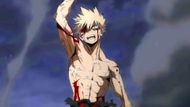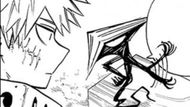My Hero Academia's final season carries one of the most emotionally charged arcs in recent shonen history, bringing beloved characters and long-standing narrative conflicts to a head. As the final season unfolds, viewers have all eyes on pivotal moments, particularly the much-anticipated return of Katsuki Bakugo after his brush with death. Studio Bones, as the animating studio, has been under scrutiny to deliver not just a spectacle but a return that honors the character’s growth, narrative weight, and fan expectations.
My Hero Academia Final Season largely succeeds in doing justice to Bakugo’s return, providing improved pacing, emotional amplification, and visual detail in a way that elevates the moment beyond earlier criticisms.

Bakugo’s near-fatal ordeal and subsequent rescue had been a point of contention in the manga, particularly regarding pacing and emotional build. Studio Bones fixes several of these issues: the anime accelerates the rescue sequence, heightens the reactions of supporting heroes, and adds visual cues (convulsions, visible strain, detailed facial expressions) that underscore the severity of Bakugo’s condition. These are not superficial embellishments but narrative tools that render the return meaningful.
It is also typical of the studio to focus on mood and tension in this scene, lingering reaction shots, ambient score placement, and lighting decisions that oppose life and danger. Fans and critics have remarked that Studio Bones did not hold back graphic intensity, with Bakugo's body convulsing, the urgency of Edgeshot's intervention, and further medical realism less stressed in the manga.
My Hero Academia Final Season — Analyzing the Execution
Studio Bones decided to tighten the pacing of the scene in My Hero Academia Final Season. The wait between the fall of Bakugo and his rescue in the manga was criticized as tension diffusing. In the anime version, the rescue begins significantly earlier, reducing downtime and maintaining tension. This decision is mature in the realm of storytelling and is responsive to fan feedback.

The animation in this My Hero Academia scene stands out far above typical TV standards. Studio Bones delivers exceptional character work, from Bakugo’s labored breathing to the anguish etched on the rescuers’ faces, and the fluid choreography of the entire rescue sequence. While it may not reach cinematic polish, the visual intensity and precision here easily surpass most episodes from earlier seasons.
Emotionality is also enhanced by sound design and voice acting. The soundtrack is booming whenever there is a significant beat of the return, the performance of voice by Bakugo upon his first awakening is vulnerable, and the voices of supporting heroes are desperate. Studio Bones relies on these tools to ensure that the return of Bakugo is not only an action event but also a character arc event.
Nonetheless, the trade-off is minimal. Other sequences are based on still frames or short cuts that retreat to less detailed animation, in particular in transitions. Moreover, since the moment is thick, pacing in other areas of episodes leading to it can be felt compressed. But those are minor in comparison to the overall success in carrying out what is one of the most significant scenes in My Hero Academia Final Season.
To sum up, Studio Bones surpasses the expectations of the return of Bakugo in My Hero Academia Final Season. The studio creates a satisfying payoff by perfecting the use of pacing, creating more emotional visuals, and maintaining the gravity of the story. This adaptation, though not being fully devoid of imperfections, is a much better version of the source material, as the comeback of Bakugo is rewarded with the fairness it rightfully deserves towards the end of the series.
